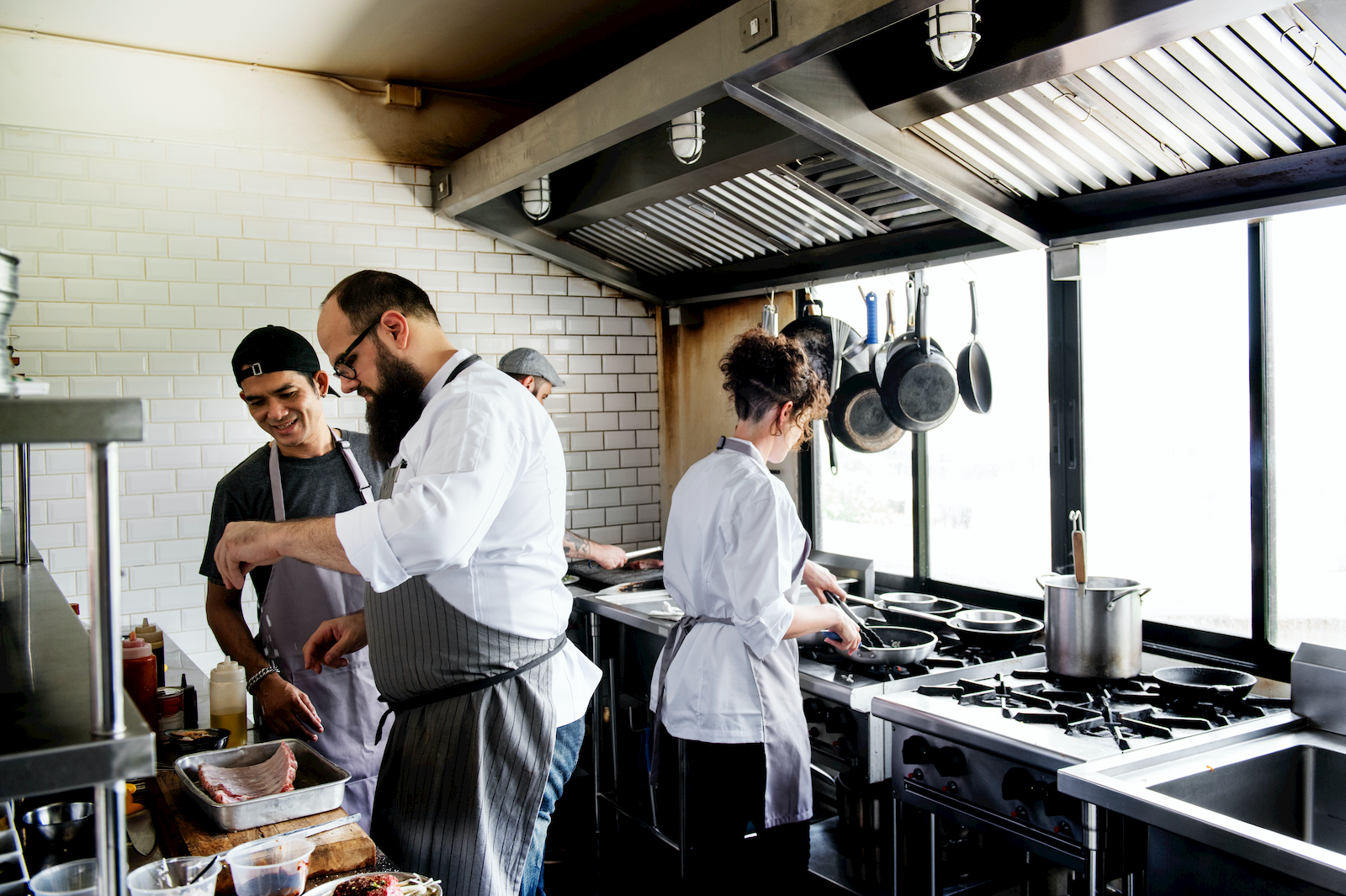Step-by-Step Guide to Introducing a Restaurant Automation System
Embracing technology in the restaurant industry isn't just about keeping up with trends.
It's a strategic move to enhance your establishment’s efficiency and customer satisfaction.
However, introducing a restaurant automation system isn't always a walk in the park.
From choosing the right tool and its seamless integration to ensuring acceptance by both staff and guests, the process can be filled with challenges.
That's where this article comes in.
Our step-by-step guide will take you through each step of implementing an automation system in your restaurant.
We'll help you assess your needs, test potential solutions, and then execute a smooth rollout.
Ready to revolutionize your restaurant operations? Let’s begin.
Assess Your Current Processes
Before diving into the world of restaurant automation, it's important to understand that not just any system will do.
The real power of these tools lies in their ability to improve your operations and alleviate bottlenecks effectively.
So, to have your restaurant fully reap the benefits of such tools, you first need to assess your current processes and identify where automation would be the most beneficial.
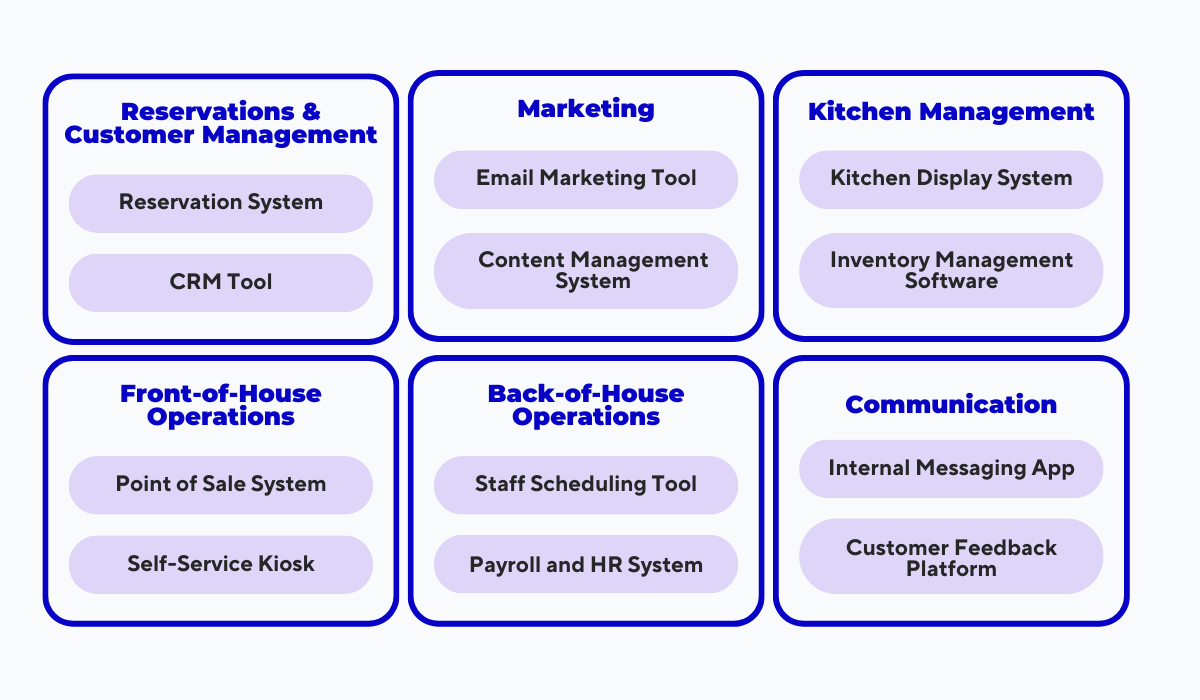
Source: Tablein
As depicted in the image above, there is a variety of tools available that cater to different aspects of
restaurant operations, from reservations and marketing to front-of-house and back-of-house operations.
The challenge lies in pinpointing the areas in your restaurant that need improvements.
For example, if reservations management is a bottleneck in your restaurant, an automation tool like Tablein can be a game-changer.
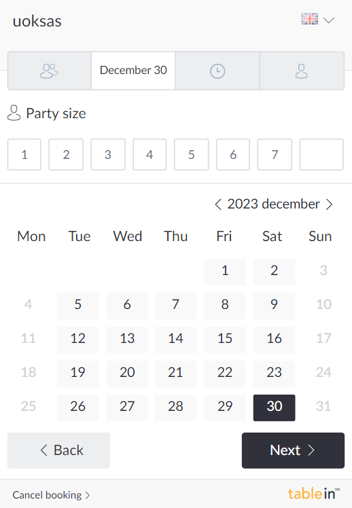
Source: Tablein
With Tablein, the reservation process is streamlined.
Customers can easily book tables through an online widget, just by selecting their party size, date, and time.
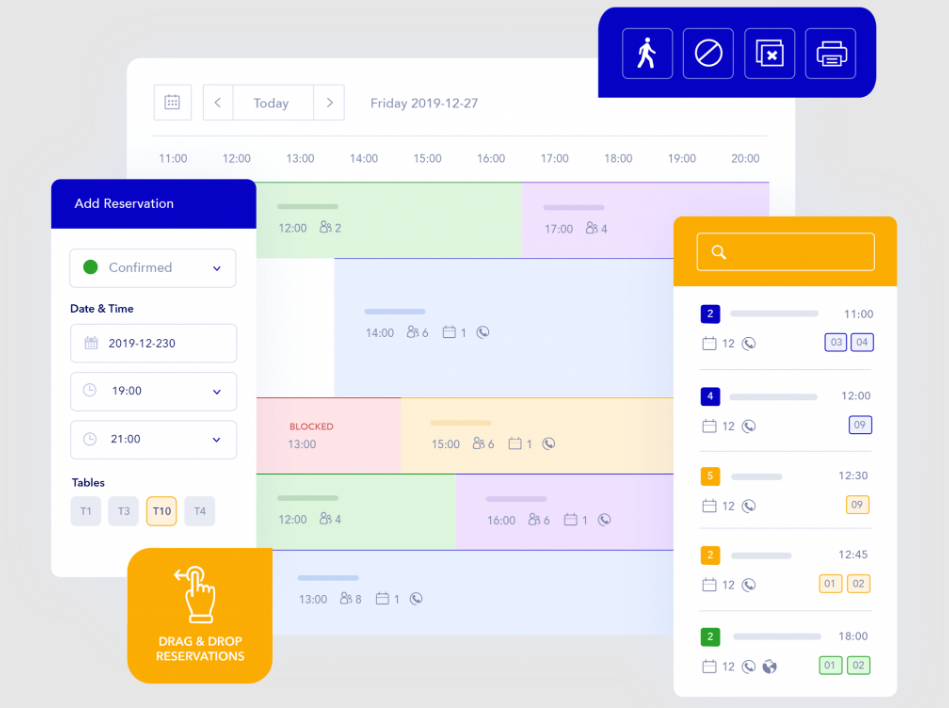
Source: Tablein
Simply put, guests interact with Tablein’s user-friendly screen and enter their details, and the system handles the rest, keeping your reservation information automatically updated and freeing your staff from repetitive manual tasks.
This process saves time and reduces the likelihood of human error in reservation management.
Overall, assessing the current state of your operations is crucial in understanding where technology can make the most significant impact, ensuring that any system you implement truly benefits your restaurant.
Set Clear Objectives
After you’ve assessed your current processes, the next crucial step is setting clear objectives for what you want to achieve with restaurant automation.
This step is essential because it guides your decision-making process, ensuring that the automation tool you choose aligns with specific goals and improves the key metrics that indicate the efficiency of your operation.
The image below highlights some common objectives you might consider to enhance your restaurant's operations.
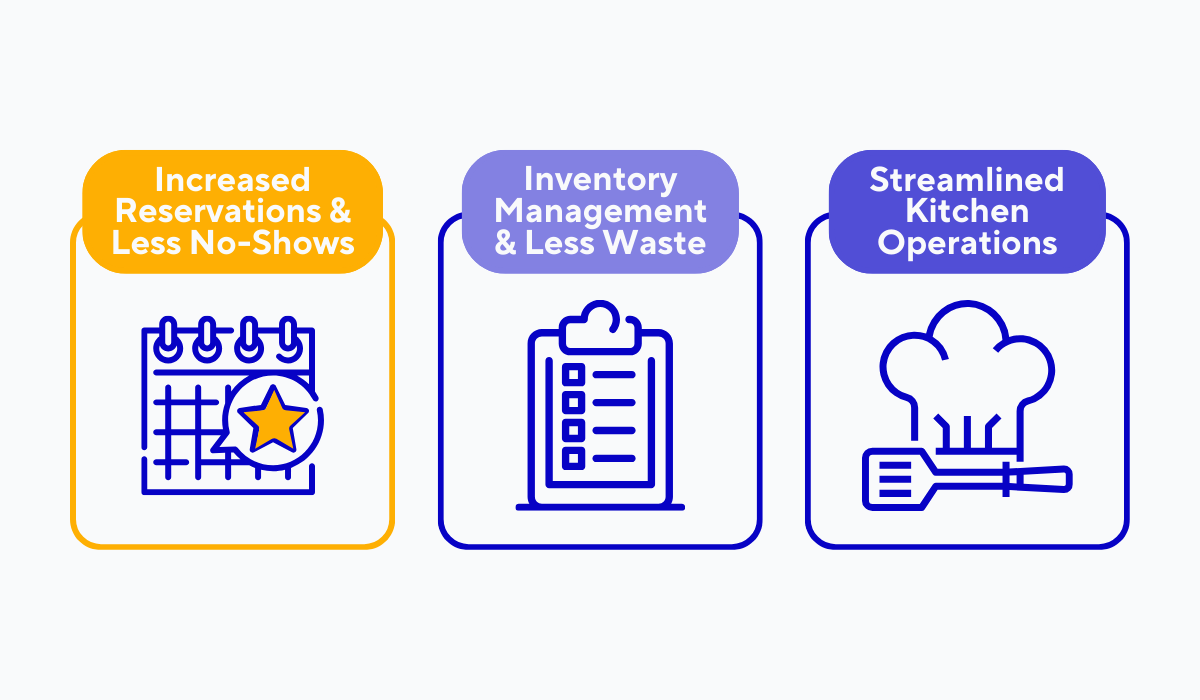
Source: Tablein
For example, if as with most restaurants, you have trouble with frequent no-shows at your establishment, implementing a system that charges a fee for missed reservations or late cancellations could be a strategic move.
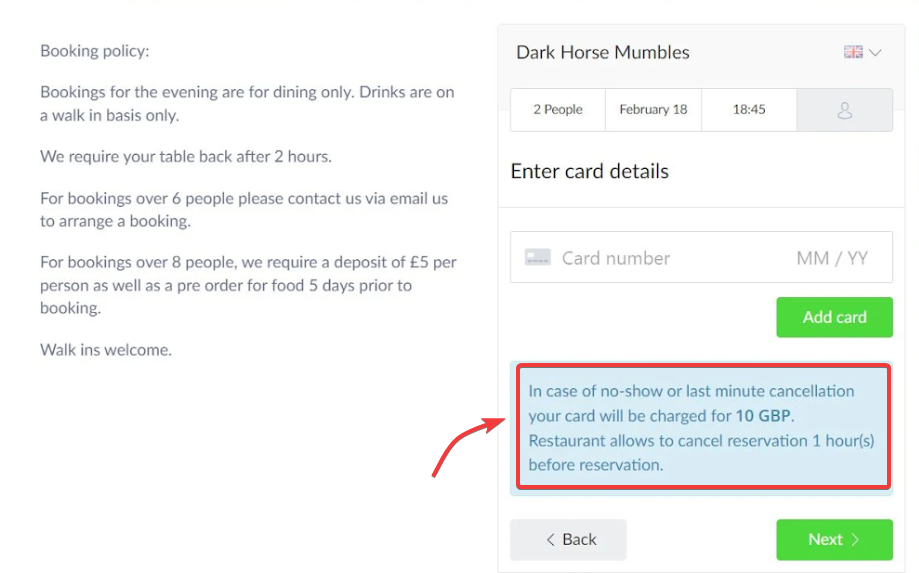
Source: Tablein
Using a tool that automatically collects deposits can significantly reduce the frequency of no-shows with no added effort on your end, as customers are more likely to commit to their reservations when a financial incentive is involved.
Or, say your challenge lies in inventory management and reducing food waste.
Then, you could use some of the top inventory management systems like Restaurant 365 or Petpooja.
But the goals you choose to focus on can also extend to improving back-of-house operations.
If you plan on optimizing the efficiency of your kitchen, systems like Toast's Kitchen Display System (KDS) can revolutionize how your kitchen functions, streamlining order processing and improving communication among staff members.
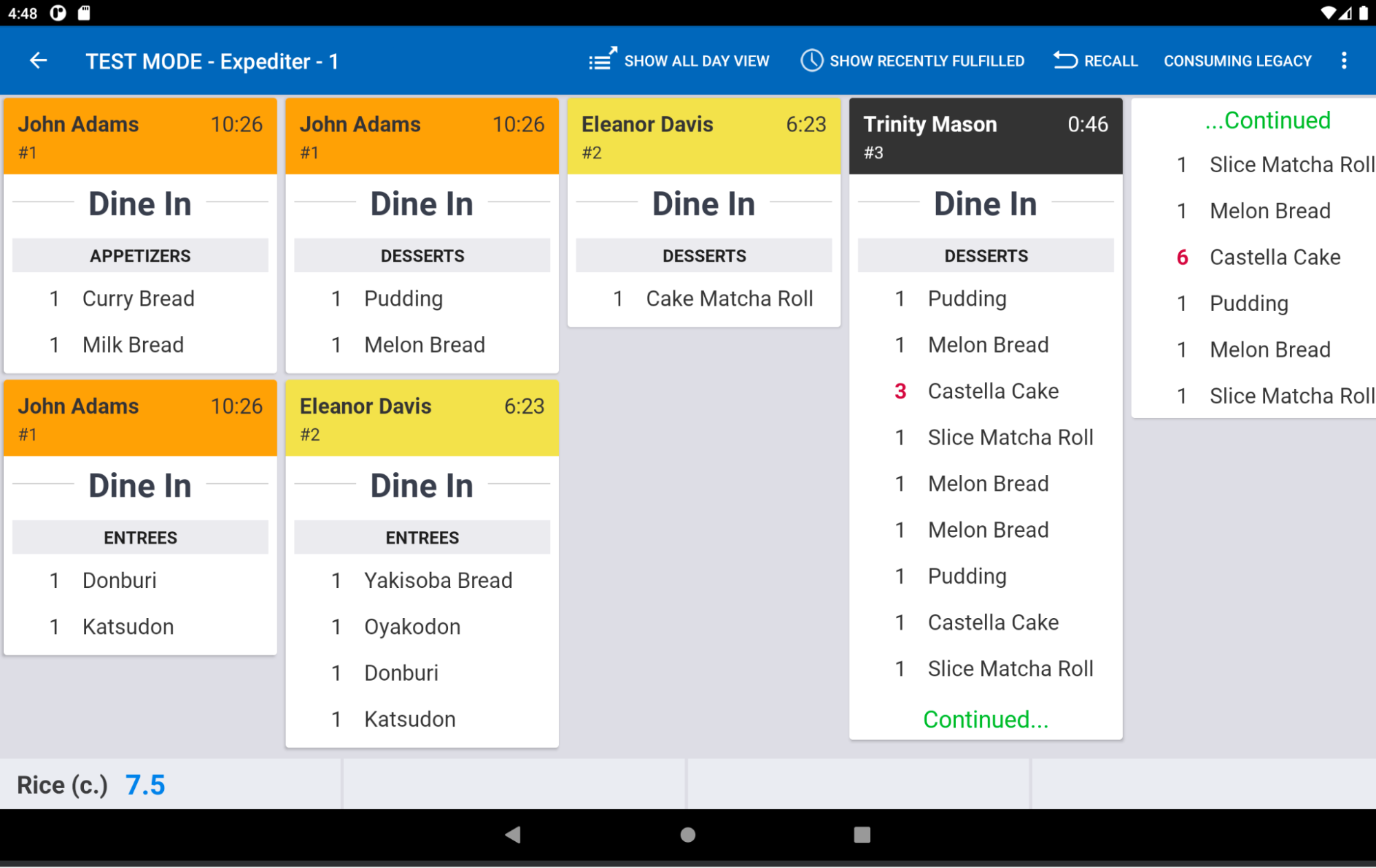
Source: Toast
The variety of restaurant automation tools available means that, with the right strategy, you can significantly improve the overall efficiency and effectiveness of your restaurant operations.
So, setting clear objectives is a critical step in this regard, as it allows you to pinpoint which aspects of your restaurant will benefit most from powerful automation solutions.
Do Research on Potential Solutions
You may notice that once you’ve pinpointed your objectives, you will be faced with a myriad of options that aim to solve that one particular issue.
The next step is to navigate through this sea of tools and find the one that best fits your restaurant’s needs.
This step requires thorough research to ensure you're making an informed decision.
Start by exploring popular software review sites, some of which are shown in the image below.
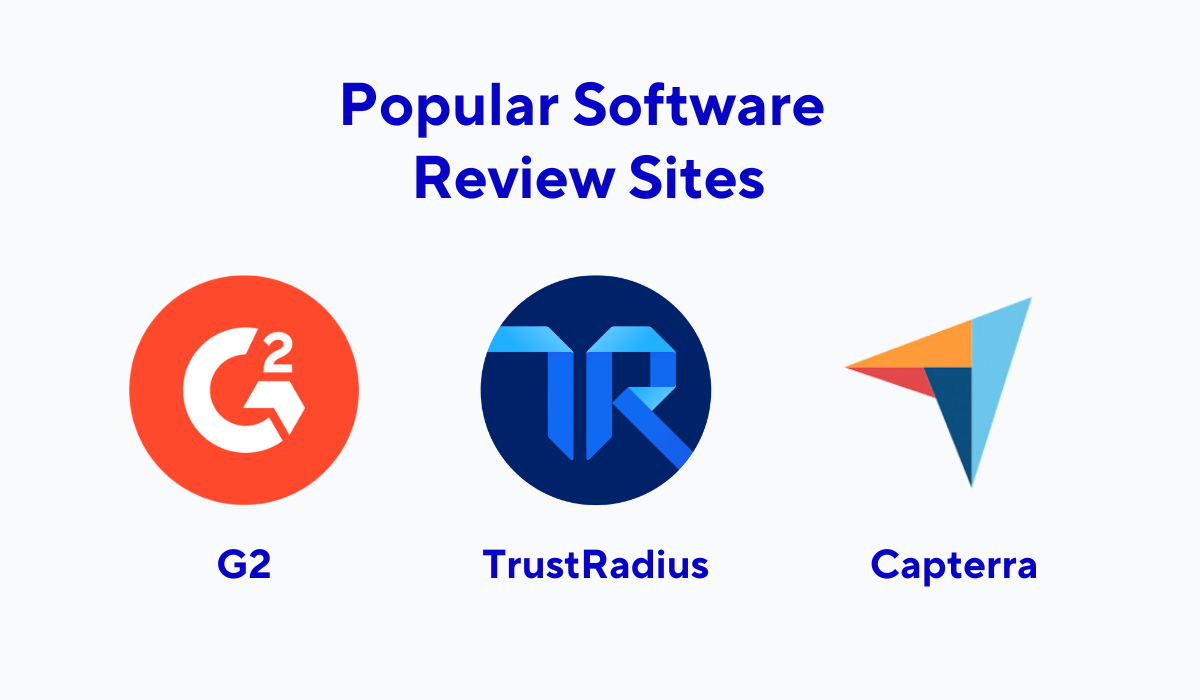
Source: Tablein
These platforms offer a wealth of information on various automation tools, complete with user reviews and ratings.
Delve into what users are saying about the systems you're interested in, paying close attention to both the positives and the negatives, and assess the overall ratings.
This step is crucial, as it gives you real-world insights into how the software performs in environments similar to yours.
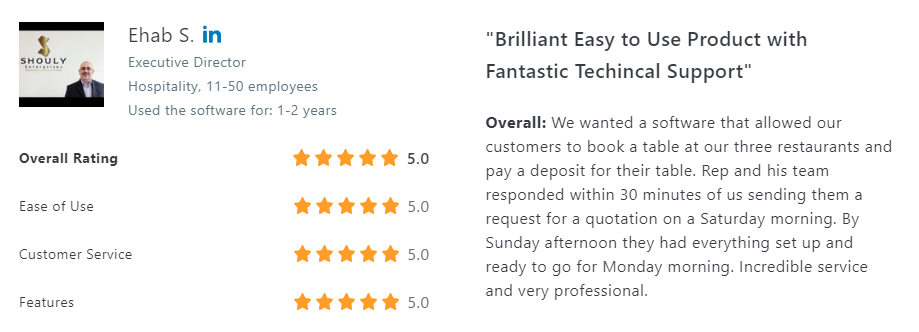
Source: Capterra
If you come across a plethora of glowing reviews like the one in the image above, you can can have confidence in the software's effectiveness.
However, it's important to ensure that these reviews are from legitimate, verified users.
For additional confirmation, reach out to your network of colleagues and peers in the industry. Their firsthand experiences can provide valuable insights and recommendations.
Finally, nothing beats scheduling a demo if the software provider offers it.
A demo allows you and your staff to interact with the software firsthand.
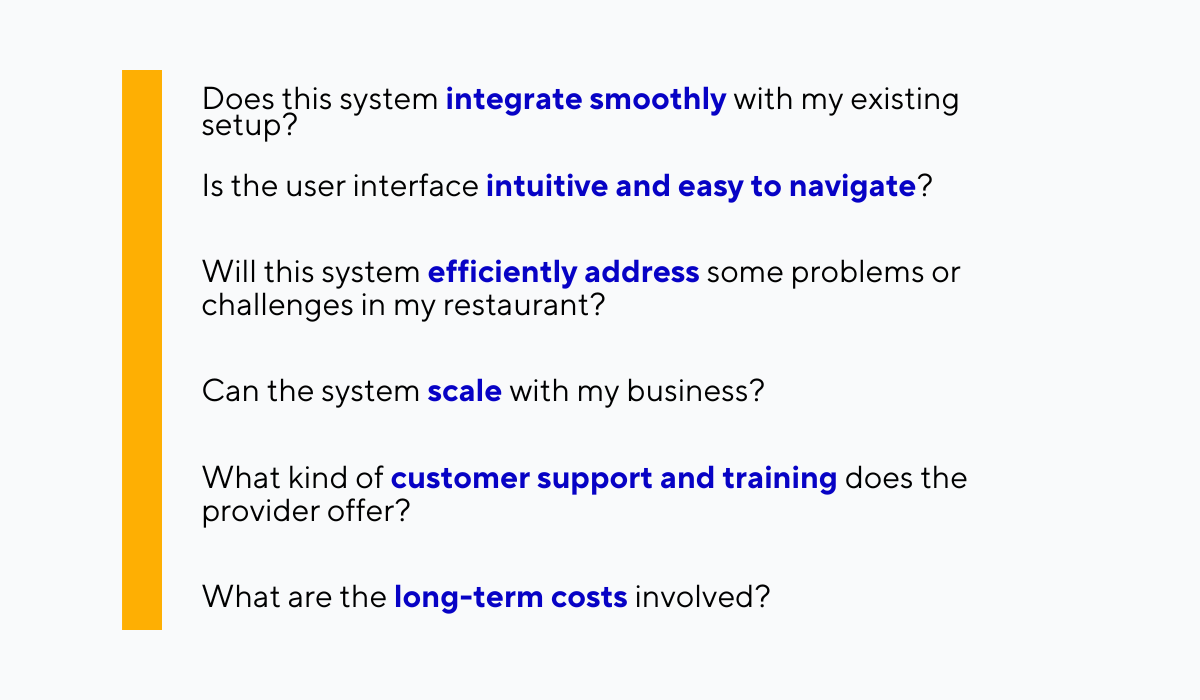
Source: Tablein
As you prepare for the demo, keep in mind the questions outlined in the image above. These will guide you in assessing the software's suitability for your specific needs and operations.
As you can see, doing comprehensive research is a vital step in the process of introducing a restaurant automation system.
The thorough approach we outlined ensures that the tool you choose will effectively support and enhance your restaurant's daily activities.
Conduct a Pilot Test
Having narrowed down your options and perhaps even experienced a free demo, the next crucial step is conducting a pilot test of the chosen restaurant automation system.
A pilot test is essentially a trial run of the software in a real-world setting, allowing you to evaluate its performance and suitability for your restaurant's specific needs.
During the pilot test, it's important to closely monitor feedback from two key groups—your staff and your customers.
Your staff, being the primary users of the system on a day-to-day basis, can provide invaluable insights into its usability, efficiency, and any potential issues that might arise.
Regularly ask for their input and take note of any difficulties or resistance they encounter.
To illustrate the benefit of staff feedback, take a look at the Reddit comment in the image below that shares honest feedback on a POS system used in their restaurant.

Source: Reddit
As you can see, this feedback reveals aspects like the tool's effectiveness for walk-ins and the quality of customer support, which are critical aspects to pay attention to.
Similarly, customer feedback is essential, especially when the automation system directly impacts their experience.
Ask about their satisfaction with your service—has it improved in any way, do they find the changes frustrating, or do they see no difference at all? All of these comments bring valuable insights.
After the pilot test, gather all the feedback and evaluate if there are any significant drawbacks or challenges with the tool.
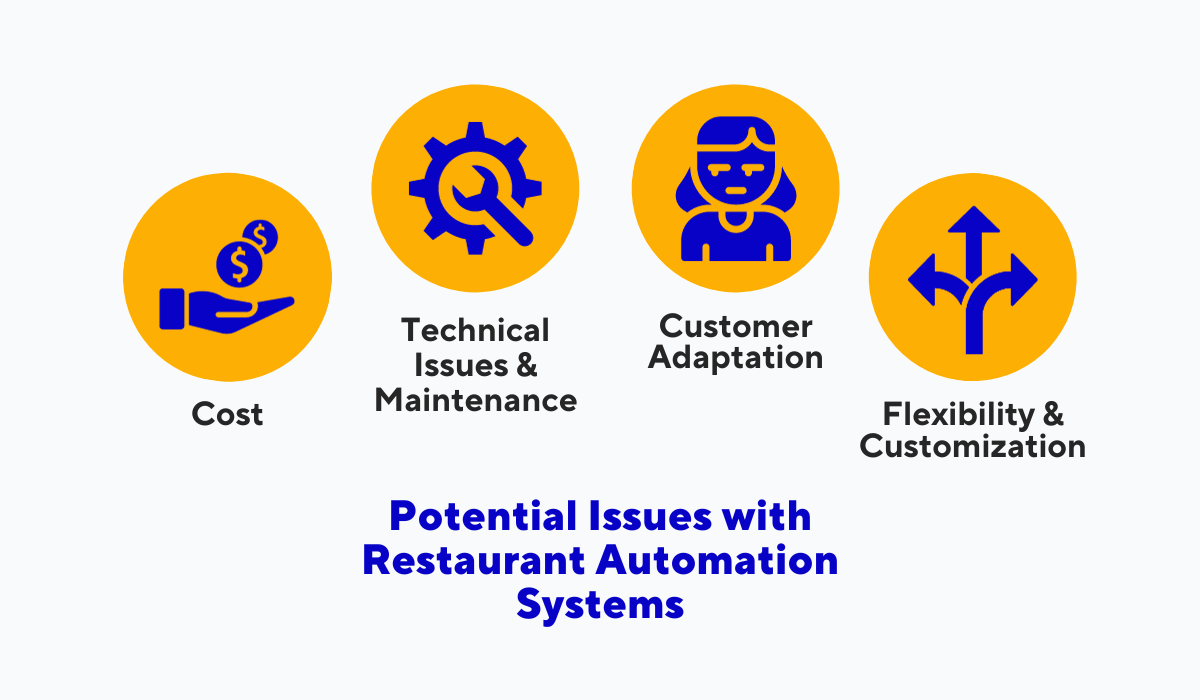
Source: Tablein
The image above highlights some common concerns that might emerge during a pilot test.
Consider factors like cost-effectiveness, how often the tool needs updates and bug fixes, or whether customers enjoyed the benefits of the automation solution during the pilot test.
You can say that the pilot test was a success if you figured out whether the chosen automation system is the right fit for your restaurant and effectively balances the benefits and potential challenges.
Train Your Employees
So, you've chosen the perfect automation tool for your restaurant.
But the job's not done yet.
Now comes the crucial phase of making this tool work effectively for you, and that involves thorough staff training.
Training is essential for empowering your staff to utilize the restaurant automation system to its fullest potential.
Rolling out a new restaurant automation system, especially during a busy period, without adequate training can lead to confusion and inefficiency.
Therefore, it's important to introduce the system to your staff in a structured manner.
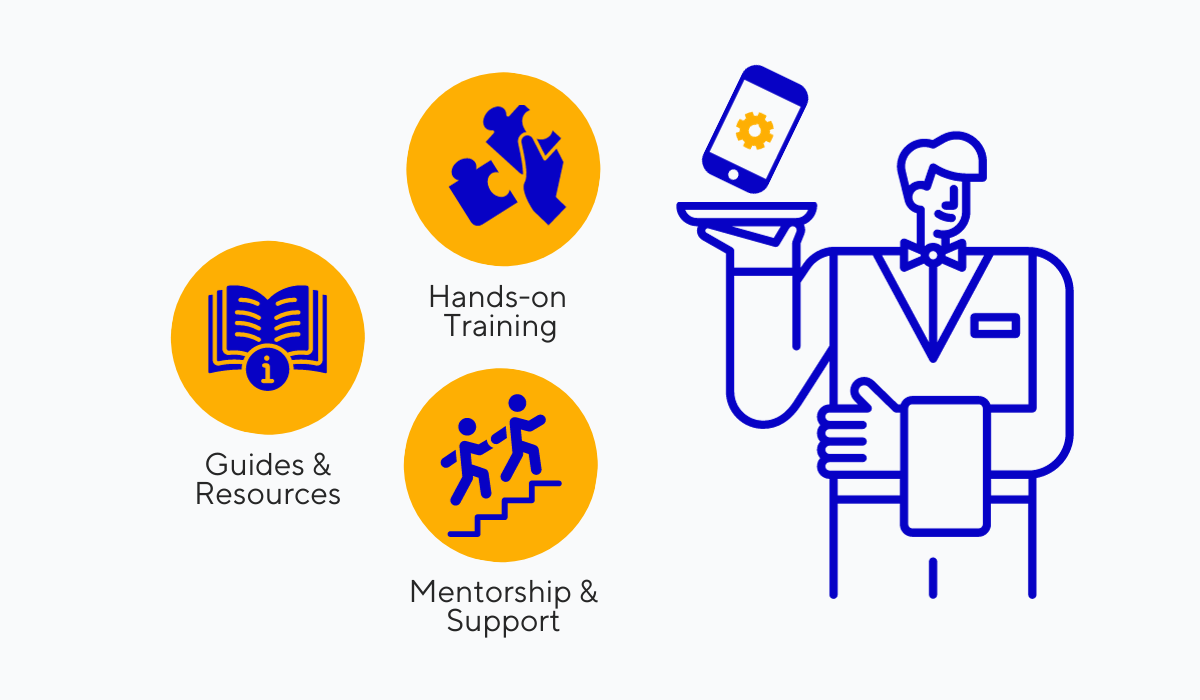
Source: Tablein
The image above illustrates several effective strategies for staff training.
Start with hands-on training sessions, ideally during quieter shifts, where staff can familiarize themselves with the system's functionalities under guidance.
This should be supplemented with resources and support from the customer service team of the software provider.
Speaking of support, make full use of any available resources that come with the tool.
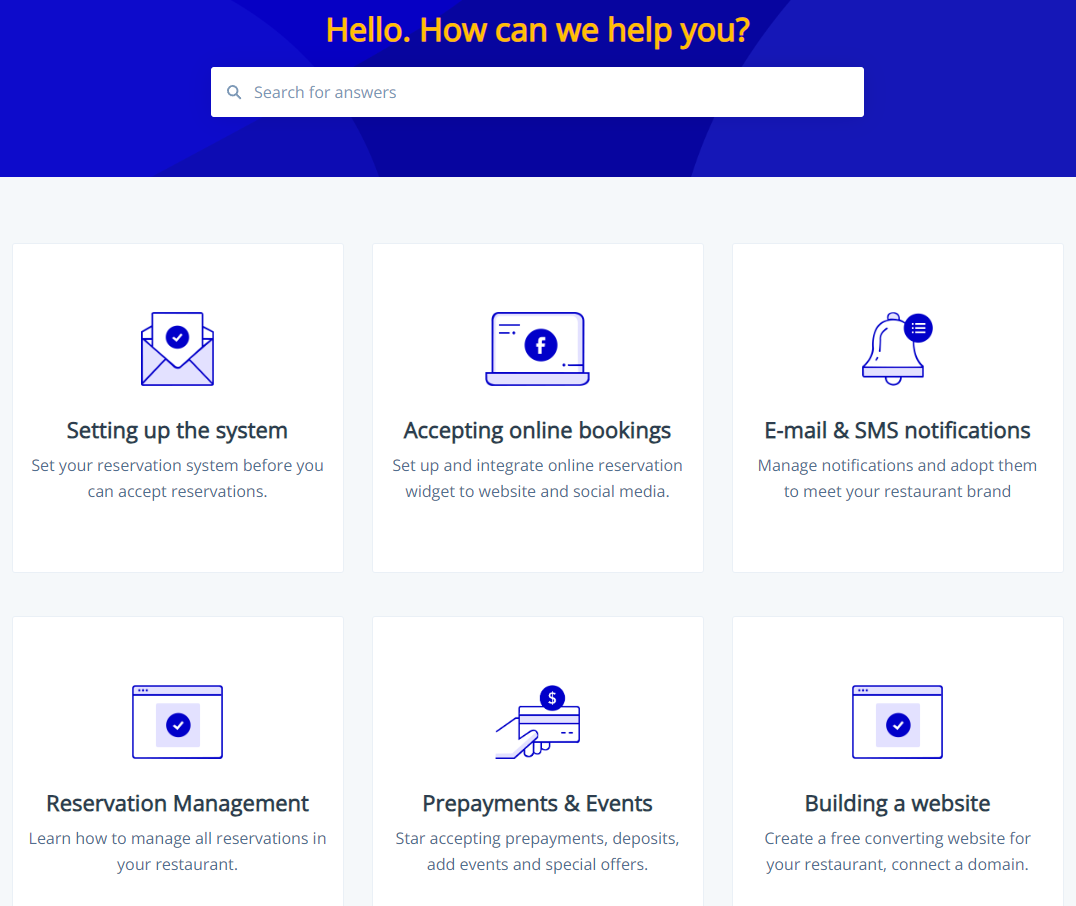
Source: Tablein
Most quality restaurant systems come with comprehensive guides and dedicated help desks that can walk your staff through every feature and use case of the software.
Try and focus on training your senior staff first: train them thoroughly so they can then act as mentors for the rest of the team.
This peer-to-peer learning approach can often be more effective than traditional top-down training methods.
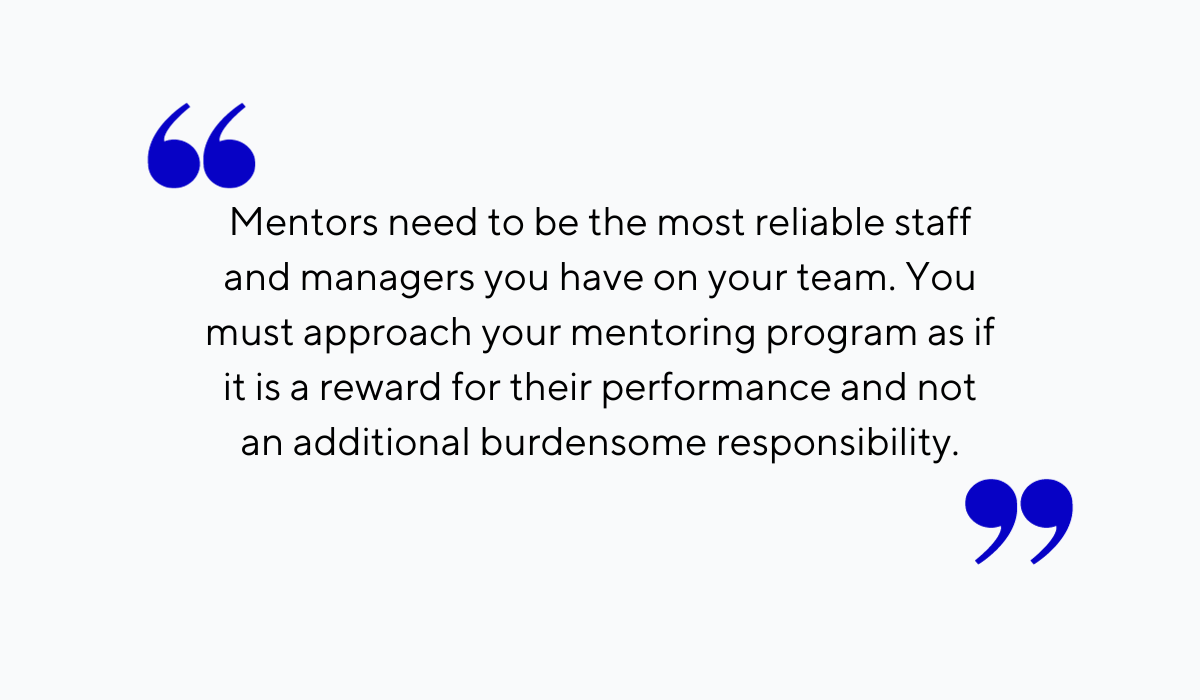
Illustration: Tablein / Data: The Rail
As highlighted in the quote from a Rail article shown above, you want to choose dependable staff members to lead the training and provide incentives for these mentors to motivate them to invest effort in training their colleagues.
To summarize, by investing time and resources in training your staff, you ensure that the new automation tool is used effectively, thereby maximizing its benefits for your restaurant's operations.
Inform the Customers
Finally, let’s not forget about your customers.
Introducing a new restaurant automation system isn't just about internal adjustments, as it's equally as important to effectively communicate these changes to your customers.
This is especially the case when you have new restaurant systems that directly impact the way guests interact with your services, like the ones shown below.
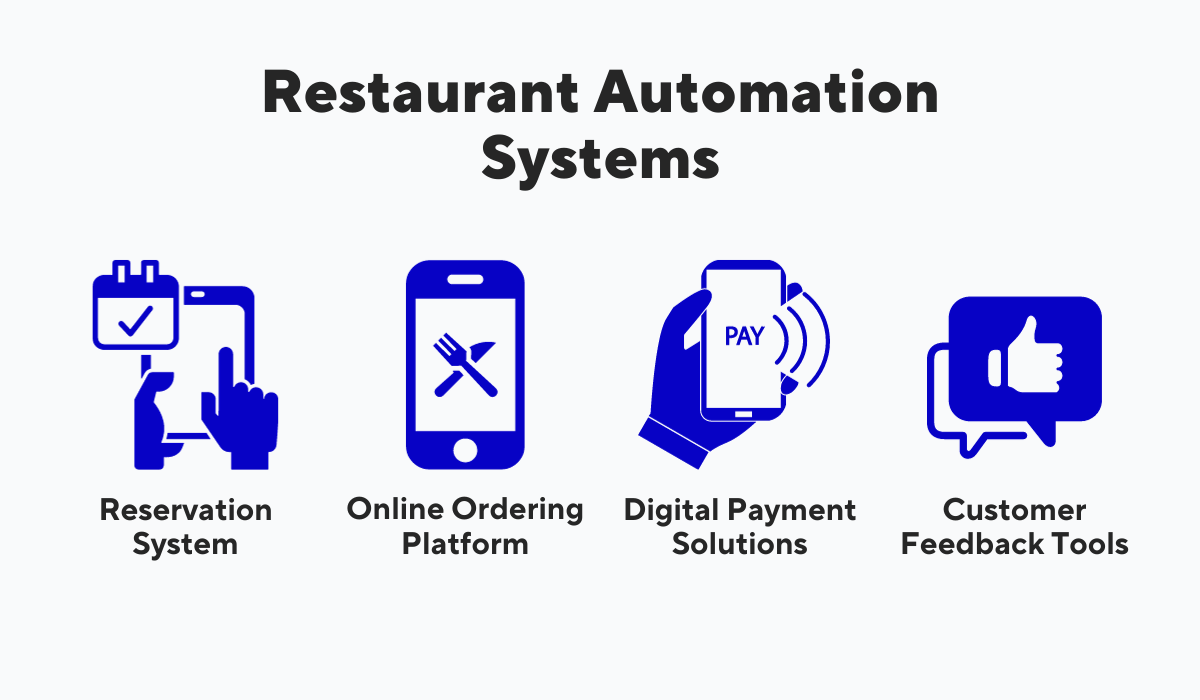
Source: Tablein
In such cases, you want to have clear and timely communication for a smooth transition.
Utilize a variety of channels to reach your audience like the following:
- signs withinin the restaurant,
- website updates,
- social media announcements, and
- email newsletter updates.
Starting this communication well in advance of the system’s rollout ensures that customers are not taken by surprise.
After the initial announcements, you don’t have to stop there.
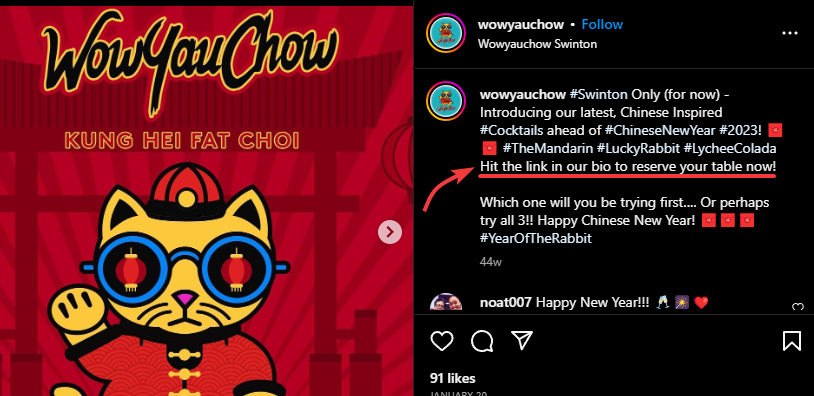
Source: WowYauChow on Instagram
Regular reminders and updates, as shown in WowYauChow’s Instagram post above, are crucial.
These don't have to be elaborate—a simple message that you take online reservations can effectively inform and encourage guests to engage with the new system.
Additionally, your front-of-house staff plays a critical role in this transition.
The image below illustrates effective communication techniques your staff can use, including incentives to encourage guests to try out the new solutions.
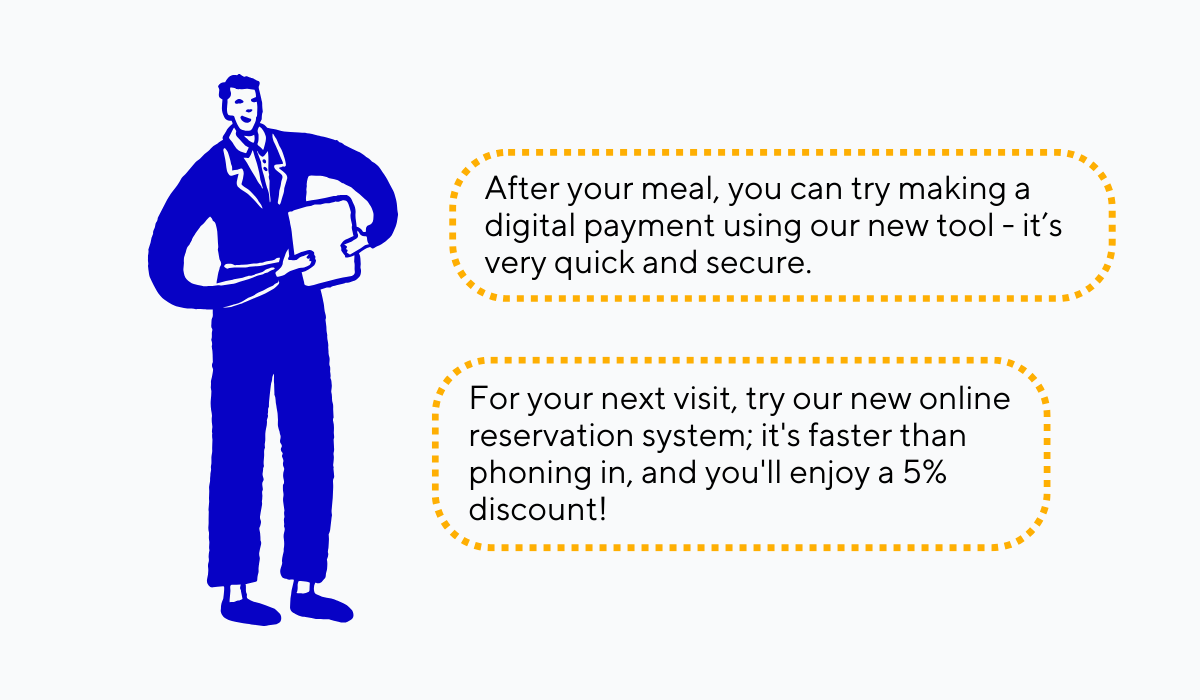
Source: Tablein
Waitstaff should be well-versed in explaining the new system to guests in a friendly and helpful manner.
Sometimes, the personal touch they add can make a significant difference in how guests perceive and adapt to the change.
In conclusion, properly informing your customers about a new restaurant automation system is a key step towards ensuring its successful adoption and enhancing the overall guest experience.
Conclusion
Throughout this guide, we've navigated the intricacies of introducing a restaurant automation system, from the initial assessment to the final rollout.
Our aim was to provide you with a clear roadmap, demystifying each stage of the process and giving you a better understanding of how to choose the right system, test its capabilities, and integrate it into your daily operations.
Implementing these steps can lead to improved efficiency, enhanced customer experiences, and a competitive edge in the bustling restaurant industry.
So, take these insights, apply them to your restaurant, and watch as your business transforms, one automated step at a time.
Welcome to the future of dining!
Share this
You may also like

Build Your Restaurant's SMS Marketing Strategy In 7 Steps

7 Easy Steps to Kickstart Your Restaurant's Email Marketing
